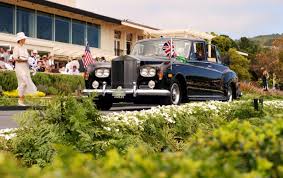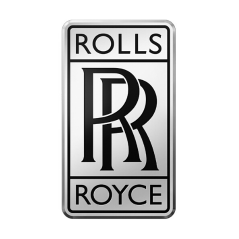1970 Rolls-Royce Phantom VI by H.J. Mulliner, Park Ward

The descriptions of the Classic Cars in the Directory were partly generated or supplemented with the help of artificial intelligence (AI). The content may occasionally not always be entirely accurate or factually correct despite careful checking.
The Rolls Royce Phantom VI by H.J. Mulliner, Park Ward 1970 is a masterpiece of engineering excellence that combines power, luxury, and elegance in equal measure. With its opulent design and advanced technical features, this car represents the pinnacle of automotive engineering of its time.
At the core of this vehicle's performance is a massive 6.2-liter V8 engine that delivers an astounding 220 horsepower. The engine is paired with a three-speed automatic transmission, which allows for smooth and effortless shifting between gears. The suspension is also state-of-the-art, featuring independent front suspension with coil springs and a live rear axle with leaf springs. Together, these features provide a smooth ride, even over rough terrain.
The exterior of the Phantom VI is equally impressive, with a striking and imposing design that exudes sophistication and style. The body is made of high-quality steel and features a long wheelbase, measuring at 149.5 inches, which ensures maximum comfort and stability for passengers. The car's exterior also showcases many of the classic Rolls Royce design elements, including its iconic grille, the Spirit of Ecstasy hood ornament, and intricate chrome trim.
Inside, the Phantom VI is nothing short of a masterpiece of luxury and comfort. The car features plush leather seats, wool carpeting, and finely crafted wood paneling that provides a warm and inviting ambiance. There are also a host of advanced technical features, including power windows, air conditioning, and a high-end sound system. Additionally, the car has a number of convenience features such as door-mounted mirrors and a retractable radio aerial.
Another key feature of this car is its advanced safety equipment. The Phantom VI has a powerful braking system, four-wheel disc brakes, and a hydraulic self-leveling system that ensures optimal performance in all driving situations. There are also front and rear seat belts, along with dual hydraulic circuits and a pressure-balancing tandem master cylinder, which helps ensure consistent brake performance.
Overall, the Rolls Royce Phantom VI by H.J. Mulliner, Park Ward 1970 is a marvel of automotive engineering that offers a superior driving experience, reliability, and unmatched luxury. Its combination of technical sophistication and timeless design, makes it a remarkable vehicle that is still revered by car enthusiasts, collectors and fans of luxury brands worldwide.
Milestones
- Rolls Royce Phantom VI was introduced in 1968 as the successor to the Phantom V. - The car was designed by J.P. Blatchley, chief stylist of Rolls Royce, and built by H.J. Mulliner, Park Ward. - The Phantom VI was the last model of Phantom series to feature a separate chassis and body. - The car was powered by a 6.2-liter V8 engine that produced 220 horsepower and 369 lb-ft of torque. - The Phantom VI had a wheelbase that measured 3,658 mm and an overall length of 6,172 mm. - The car was equipped with various luxury features such as air conditioning, power windows, power steering, and a high-end audio system. - The Phantom VI was primarily designed as a limousine for heads of state and royalty. - Production of the Phantom VI continued until 1990, with 374 units manufactured during that period. - The car was often customized to meet the specific requirements of its customers, with options such as bulletproof glass and communication systems added upon request. - The Rolls Royce Phantom VI remains an iconic model to this day, known for its opulence and grandeur.Technical
• Engine: 6.75-liter V8 petrol engine • Maximum power output: 200 bhp at 4,000 rpm • Transmission: 3-speed automatic • Brakes: 4-wheel servo-assisted hydraulic drum brakes • Suspension: Independent front suspension with coil springs and rear live axles with semi-elliptic leaf springs • Wheelbase: 3,505 mm (138.0 in) • Length: 6,275 mm (247.4 in) • Width: 1,930 mm (76.0 in) • Height: 1,790 mm (70.5 in) • Weight: 2,330 kg (5,138 lb) • Top speed: 96 mph (154 km/h) • Fuel consumption: 11.8 mpg (23.9 L/100 km) • Production years: 1968-1990 • Number of units produced: 374 • Features: Leather interior, air conditioning, power windows, power steering, and a variety of luxury amenities.